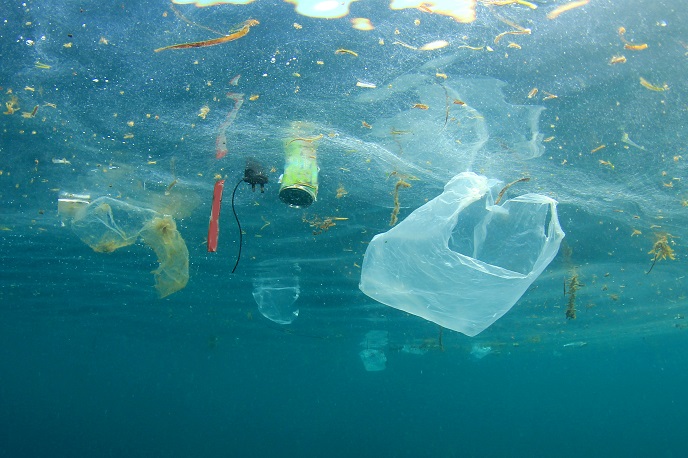Getting under the ocean’s (microplastic) skin
The extent of scientific, political and media coverage around sea and ocean plastic can barely hide an inescapable truth: At this point, we’ve hardly scratched the surface of all the chain reactions this plastic accumulation is setting off. Let’s take the SML. This 1 mm-thick barrier between water and the atmosphere – you could view it as the ocean’s skin – may not look like much compared to the immensity of the world under it, but it is actually a key interface between the two environments. Major physical, chemical and biological exchanges take place in the SML, while the large variety of living organisms (fish eggs, larvae, bacteria, micro-invertebrates and algae) inhabiting it increasingly mix with plastics of low density. Upsetting the SML’s delicate balance “We know that natural organic matter, as well as anthropogenic contaminants, can be highly enriched up to a hundred times in the SML compared to the underlying water. What we did not know prior to our project, however, is how increases in microplastics and organic matter might influence each other and affect the important functions of the SML,” explains Prof. Steven Loiselle, coordinator of POSEIDOMM (Photochemistry at the Ocean’s Surface: Effects and Interactions of Dissolved Organic Matter with Microplastics) on behalf of the University of Siena. Where scientific insight used to be scarce, POSEIDOMM investigated the effects of microplastics on the SML. The team explored their impact on the production of organic matter, the degradation of this organic matter as a potential net source of CO2 in the atmosphere, as well as other microplastic-induced changes in the molecular composition of the SML. To get there, the consortium combined in-lab, controlled experiments (microPOSEIDOMM) on various water samples with a world-first large-scale in situ mesocosm experiment focusing on microplastics (mesoPOSEIDOMM). According to Dr Luisa Galgani, principal investigator of the project, one of the most important findings of the project is how, “in the presence of microplastics in surface waters, the combined photochemical and microbial degradation of organic aggregates leads to further reduction in oxygen concentrations. In fact, a common observation from all our microcosm experiments was a significant reduction in oxygen concentration in treatments including microplastics, compared to ‘control’ samples.” These experiments suggest that marine microplastics act as localised hot spots for microbial activity. As this low-density plastic debris can remain on the sea-surface for a long time, this accumulation at the sea-surface may interfere with the SML’s production, consumption and exchange of gases. The need for further study According to Dr Galgani, this has potential consequences for the ocean’s respiration that need to be further studied. And while the results of the mesocosm study have yet to be published, the team says that they will further highlight the need for action and additional studies. Speaking of future research, the consortium members are currently looking for new opportunities. They would like to focus these efforts on field quantification and monitoring, experimental studies on enrichment processes, and models of plastic residence time in the SML, as well as to push even further by exploring the effects of different types of plastics in a variety of aquatic environments – from riverbed sediments and soils to seawater and freshwater.
Keywords
POSEIDOMM, SML, surface, microlayer, microplastics, CO2, oxygen, ocean respiration







